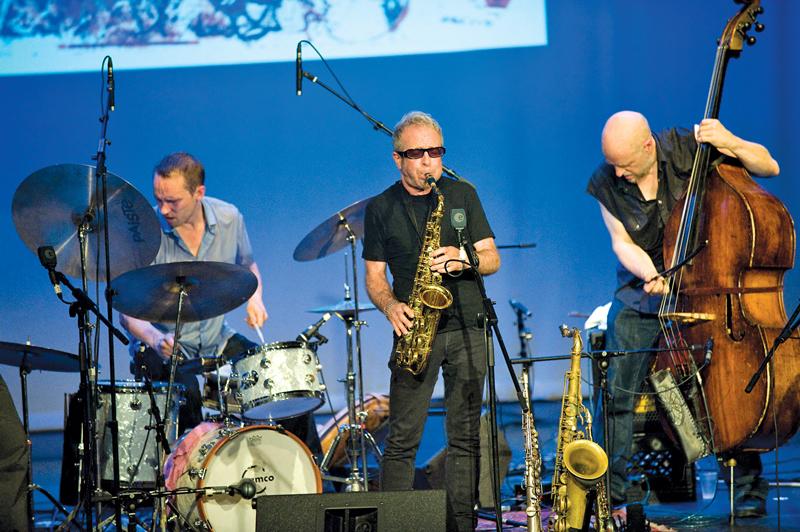Among the wonders of the short history of jazz is its urbanism. The musical chronicles of American cities are complex and convoluted, reflecting the economic and demographic perturbations of the twentieth century and beyond. When the more experimental trends of jazz blossomed in the late Fifties and early Sixties, Chicago played a particularly prominent place, but by the middle of the Seventies opportunities for more adventurous artists there waned.
One of the persisting centers of creativity was the NRG Ensemble. Directed by the drummer and saxophonist Hal Russell, it brought together younger musicians to play a raucous, if disciplined, form of avant-garde jazz tinged with an idiosyncratic sense of humor. When Russell died, his fellow saxophonist Mars Williams took over the band, leading it off and on to this day.
Most of NRG’s players have developed their own careers but continue to collaborate. Williams and bassist Kent Kessler have remained particularly close, including their joint work in the Peter Broetzmann Chicago Tentet–the fiery elder statesman of European free improvisation had inspired them for years. The Tentet also included the Norwegian drummer Paal Nilssen-Love, who has a long history of Chicago connections.
Williams, Kessler, and Nilssen-Love make up the trio Boneshaker. Their tour in support of their fourth CD, topically titled Fake Music, arrives at the Kerrytown Concert House on April 6.
All three are eclectic, technically accomplished musicians. Though their main stylistic base is free jazz improvisation, they also embrace a wide variety of contemporary musical forms, from funk to metal and noise rock, and their highly charged, emotive playing exploits the full range of possibilities on their respective instruments.
Williams regularly plays with more popular acts such as the Psychedelic Furs or Liquid Soul, switching with virtuosity between tenor, alto, soprano, and sopranino saxophones and a seemingly endless variety of toy noisemakers. All of this provides the trio with a broad swath of tonal and stylistic resources: the fully improvised music they play shifts constantly, sometimes raucously blaring, at other times quiet and tender. It can be extremely aggressive, reflecting the lessons of Broetzmann and certain Chicago traditions, but they can also launch into a tender ballad or stately hymn.
There are no musical introverts in this trio, and a sense of humor can surface at any time. This may be adventurous music, but it is immensely entertaining in the best jazz manner: the rhythms may shift in meter and tempo, but this band always swings.



